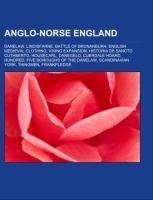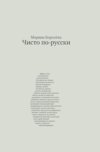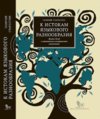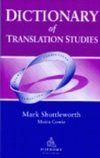
-
 Anglický jazyk
Anglický jazyk
Anglo-Norse England
Autor: Source: Wikipedia
Source: Wikipedia. Pages: 52. Chapters: Danelaw, Lindisfarne, Battle of Brunanburh, English medieval clothing, Viking expansion, Historia de Sancto Cuthberto, Housecarl, Danegeld, Cuerdale Hoard, Hundred, Five Boroughs of the Danelaw, Scandinavian York,... Viac o knihe
Na objednávku, dodanie 2-4 týždne
16.56 €
bežná cena: 18.40 €
O knihe
Source: Wikipedia. Pages: 52. Chapters: Danelaw, Lindisfarne, Battle of Brunanburh, English medieval clothing, Viking expansion, Historia de Sancto Cuthberto, Housecarl, Danegeld, Cuerdale Hoard, Hundred, Five Boroughs of the Danelaw, Scandinavian York, Thingmen, Frankpledge, England in the Middle Ages, St. Brice's Day massacre, Treaty of Alfred and Guthrum, Gosforth Cross, Hogback, Treaty of Wedmore, Great Heathen Army, Jorvik Viking Centre, Lloyds Bank coprolite, Thynghowe, Tithing, Head borough. Excerpt: The Medieval period in England is classified as the time between the fall of the Roman Empire to the beginning of the Renaissance, ranging from the years AD 449-1500. For the Anglo-Saxons, Anglo-Danes, Normans and Britons, clothing during the medieval era differed widely for men and women as well as for the social hierarchy. During this period men's clothing changed much more rapidly than women's styles; and both the men and women of lower social classes continued to wear styles from previous centuries until their garments were in such disrepair that they needed to be replaced entirely. In addition to this division, sumptuary laws also divided social classes by regulating the colours and styles these various ranks were permitted to wear. The majority of records on women's fashion during the medieval period come from the mid-fourteenth century onwards. Around the year 1340 there was a change in women's clothing, to tighter-fitting garments, lower necklines, and more curvaceous silhouettes; "tight lacing was used on women's clothes to create a form fitting shape which, girdled at the hips, created a long-waisted appearance". Clothing was over-lapped and tightly bound; "The female chest was frequently exposed, yet the true structure of the female body was visually distorted...". The corset became a staple in a woman's wardrobe, and the open surcoat, a garment with an open bodice and a skirt that trailed to the ground, became "one of the most elegant inventions of the Middle Ages...". In fact, by the end of the 14th century, the gown had replaced all garment items aside from the surcoat. The basic garments for women consisted of the smock, Hose, kirtle, gown, surcoat, girdle, cape, hood, and bonnet. Each piece had designated colours and fabrics, for example "Materials used in the middle ages were woolen cloth, fur, linen, cambric, silk, and the cloth of silver or gold...the richer Middle Age women would wear more expensive materials such as silk, or linen". The development of
- Vydavateľstvo: Books LLC, Reference Series
- Rok vydania: 2020
- Formát: Paperback
- Rozmer: 246 x 189 mm
- Jazyk: Anglický jazyk
- ISBN: 9781156764336




 Nemecký jazyk
Nemecký jazyk 
 Ruský jazyk
Ruský jazyk 




